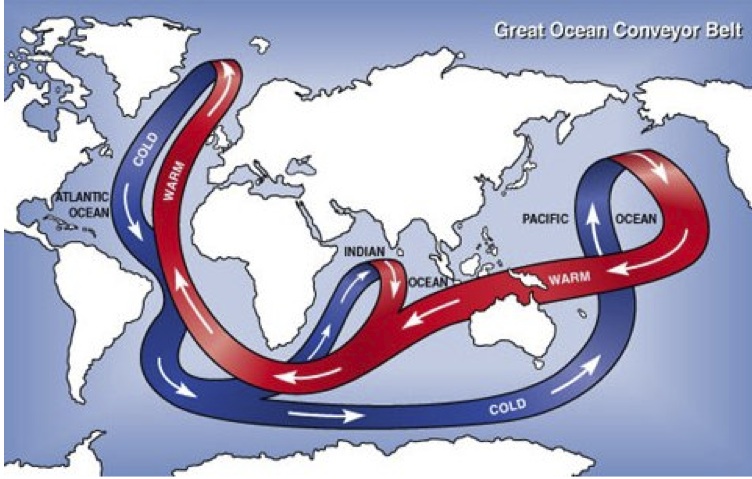The ocean circulation is driven by density contrasts. Since the density is a function of temperature and salinity, the pattern is known as the thermohaline circulation (THC). The basic structure consists of deep water emanating from the polar regions and being carried toward the Pacific Ocean, which upwells en route and is transported back in near-surface currents to the downwelling regions in the North Atlantic (principally the Norwegian-Greenland Sea and the Labrador Sea) and the Weddell Sea. This structure, which is known as the conveyor belt, was first suggested in the 1980s and is very important for the climate system. It provides a stabilizing effect on climate because of its long time scale (several decades), but research has shown that it can also cause abrupt climate change in the space of a few decades if it is disturbed in certain ways.
